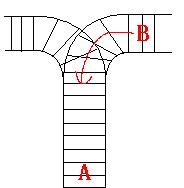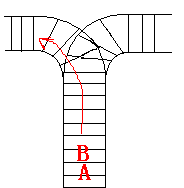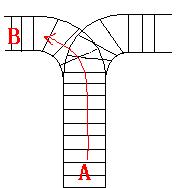


3 123 321 3 123 312
Yes. in in in out out out FINISH No. FINISHFor the first Sample Input, we let train 1 get in, then train 2 and train 3. So now train 3 is at the top of the railway, so train 3 can leave first, then train 2 and train 1. In the second Sample input, we should let train 3 leave first, so we have to let train 1 get in, then train 2 and train 3. Now we can let train 3 leave. But after that we can‘t let train 1 leave before train 2, because train 2 is at the top of the railway at the moment. So we output "No.".HintHint
#include<stdio.h>
#include<string.h>
#include<stack>
using namespace std;
int main()
{
int n, i, j, k, flag[50];
char s1[15], s2[15];
stack <char> s;
while(~scanf("%d %s%s",&n,s1,s2))
{
while(!s.empty()) s.pop(); //也可以不写这一句,把 stack <char> s; 就可以了
memset(flag,-1,sizeof(flag));
j = k = 0;
for(i = 0; i < n; i++)
{
s.push(s1[i]);
flag[k++] = 1;
while(!s.empty() && s.top() == s2[j])
{
flag[k++] = 0;
s.pop();
j++;
}
}
if(j == n)
{
printf("Yes.\n");
for(i = 0; i < k; i++)
{
if(flag[i])
printf("in\n");
else
printf("out\n");
}
}
else
printf("No.\n");
printf("FINISH\n");
}
return 0;
}hdu 1022 Train Problem I (栈的简单应用)
原文:http://blog.csdn.net/lyhvoyage/article/details/18505997